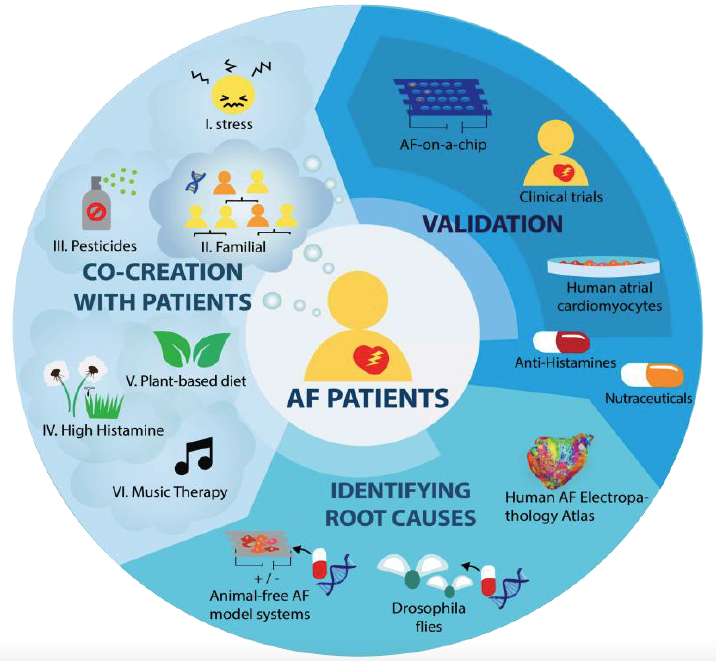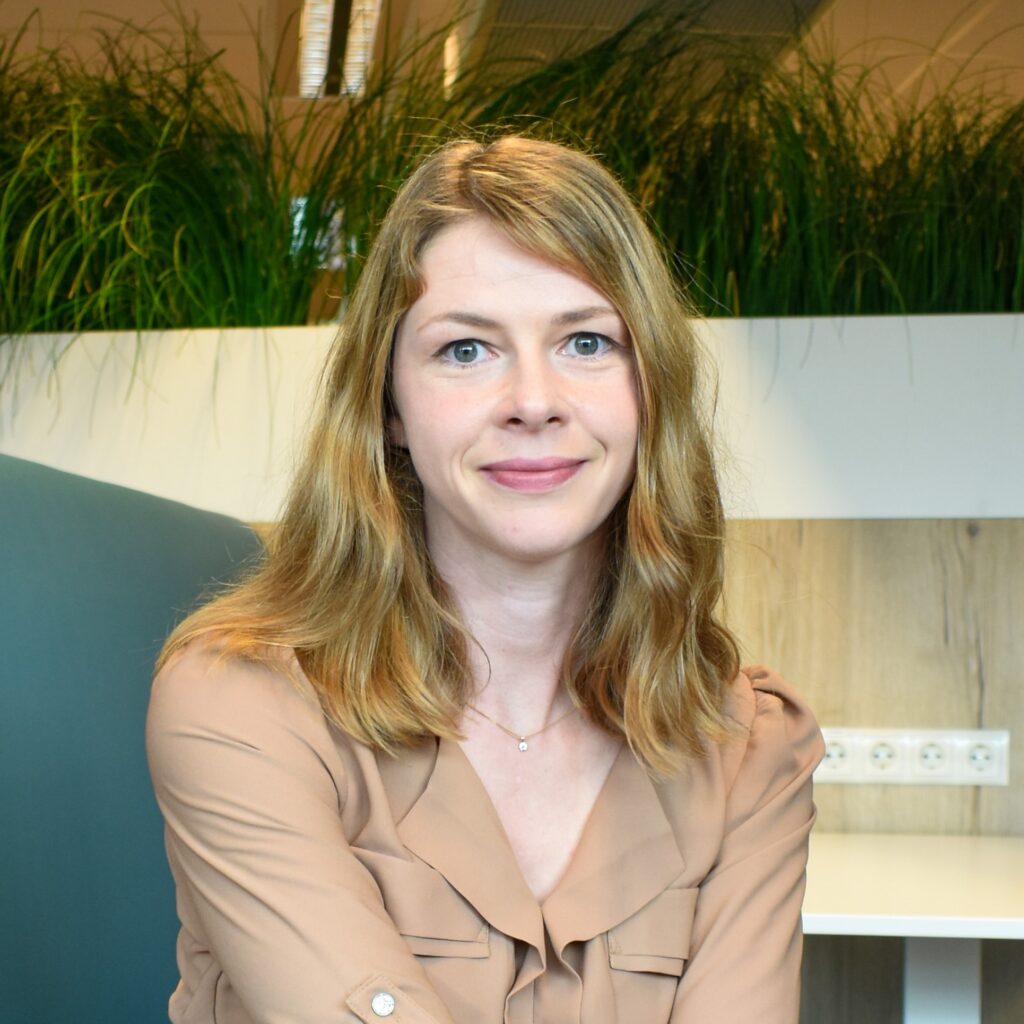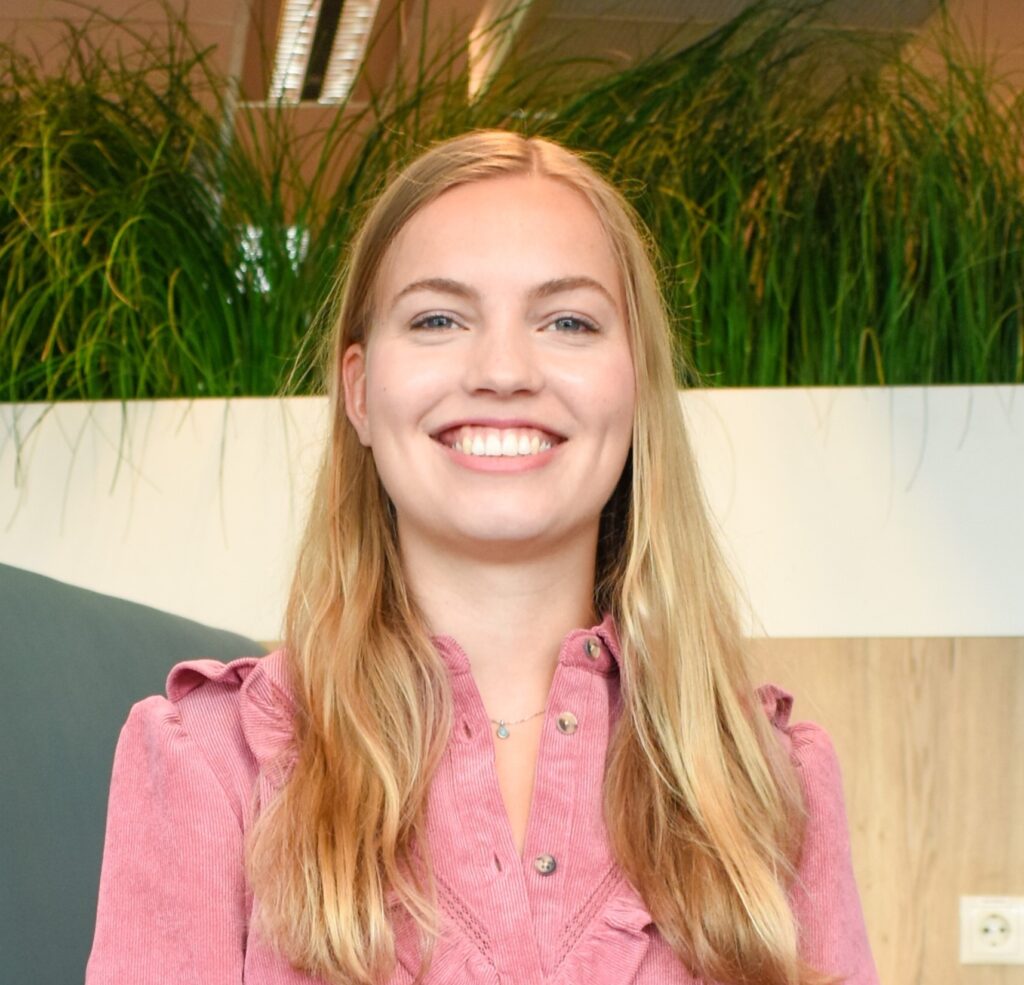From co-creation to innovative animal-free solutions for bio-electrical organ dysfunction: a CIRCULAR research approach
Funding: NWA-ORC
Project duration:
Treatment and diagnostics of several diseases, including the cardiac arrhythmia atrial fibrillation (AF), are only moderately effective due to lack of knowledge on root causes. The Netherlands accounts for 344,000 AF patients. Current AF treatments are based on ‘one-size-fits all’ and don’t prevent progression from recurrent intermittent episodes to permanent AF. Despite large-scale usage of lab-animals for AF studies, a pipeline with new effective therapies is lacking. Therefore, AF progresses in time causing a tremendous physical, psychological, societal and economic burden.
Our ambition is to reduce the AF burden by testing how (toxic) triggers for AF result in molecular and electrical dysfunction and drive AF. This will be tested in co-creation with people with lived-experience in AF and innovative animal-free technologies. Findings are utilized to discover effective treatments and diagnostics. Co-creation already resulted in three (toxic) lead triggers for research on AF root causes. Also, our team identified that bio-electrical dysfunction drives AF, i.e. atrial tissue damage-induced electrical and contractile dysfunction. Our goals are to:
- Strengthen and sustain our co-creation platform to further engage patients, researchers and other stakeholders in investigating lead triggers as root cause of AF in patient and family-cohorts.
- Align versatile innovative animal-free AF model systems to uncover root causes of bio-electrical dysfunction and identify novel targets for therapies and diagnostics.
- Validate and disseminate animal-free research approach and outcomes in co-creation with AF patients, stakeholders and industrial partners.
The Applied Nanotechnology research group contributes to this project by developing an automated AF-on-a-Chip screening device. This involves the culture of cardiomyocytes in microfluidic devices; the design and integration of electrodes within the microfluidic device; the investigation of tachypacing-induced bio-electrical dysfunction; and the integration of an automated plate handling and pipetting system for higher throughput purposes.

Click here to go back to the research line
Project members ANT:

Michelle Fleerman
Project leader
Contact: m.fleermann@saxion.nl

Elvira Zomer – Wessels
Project member
Contact: g.h.zomer@saxion.nl
Project partners:

Company Name

Company Name

Company Name

Company Name